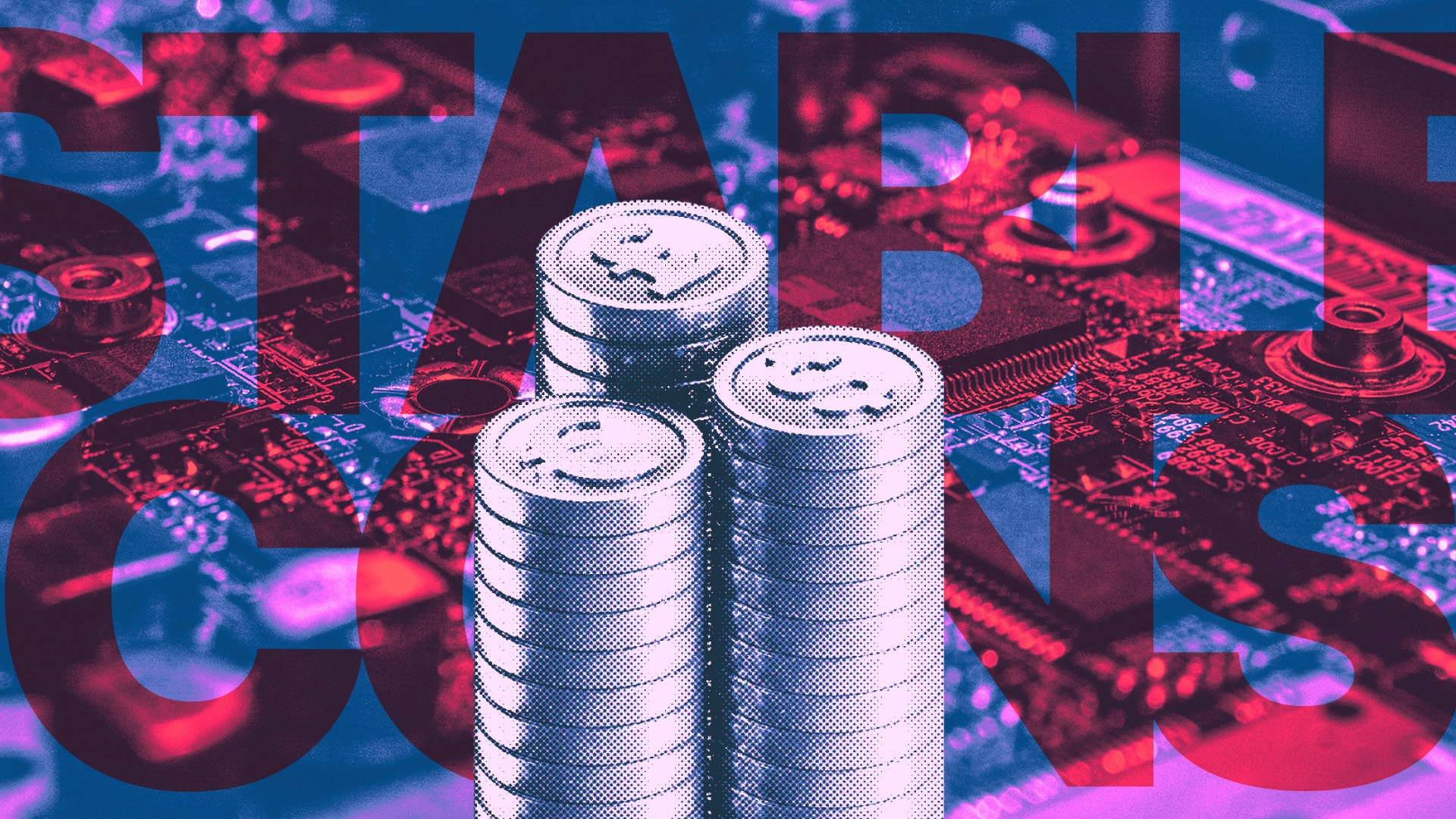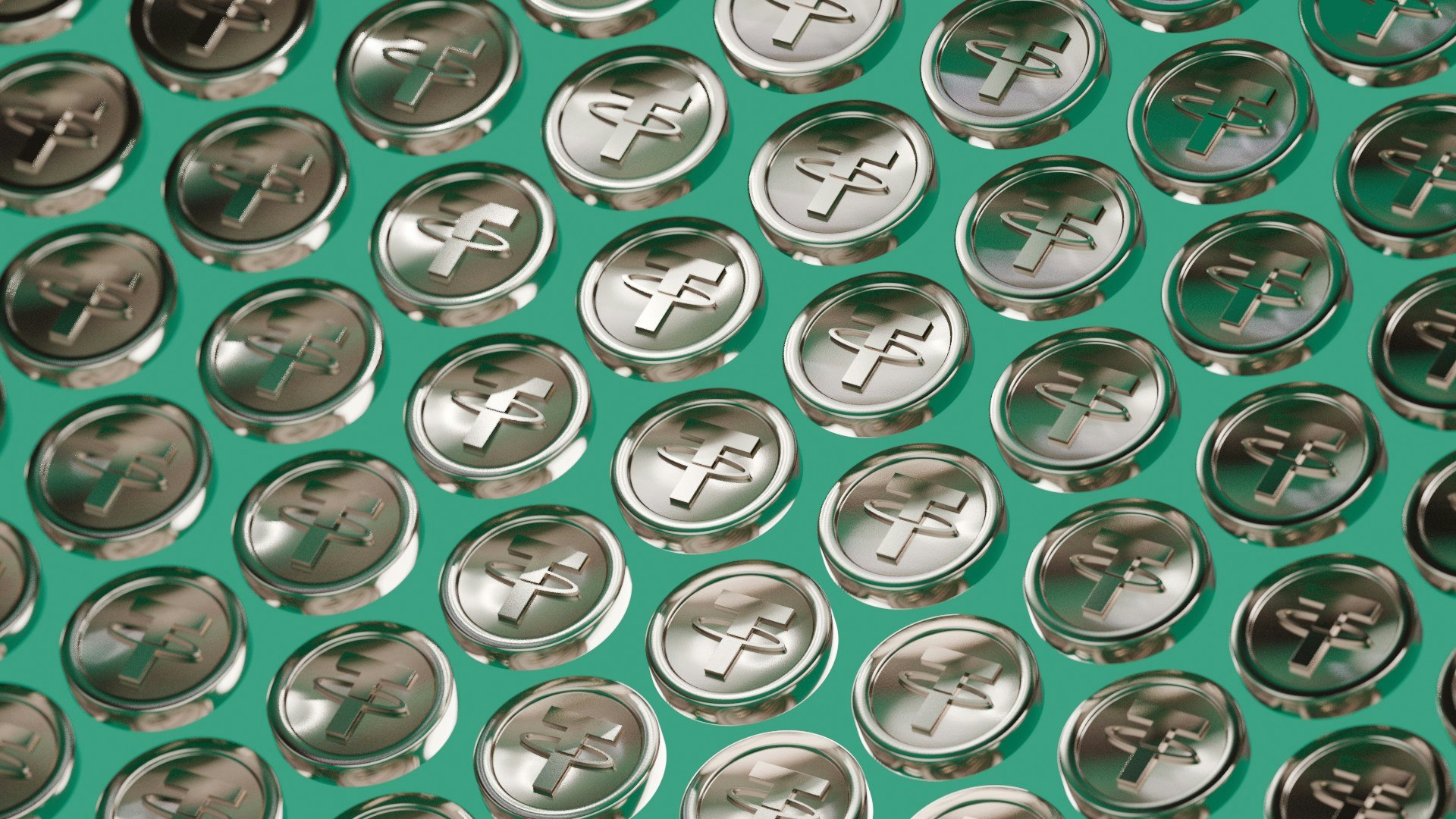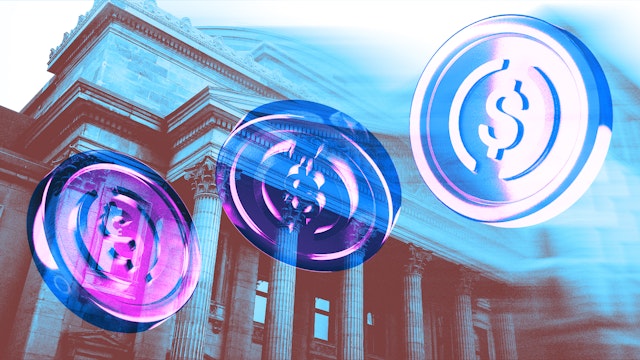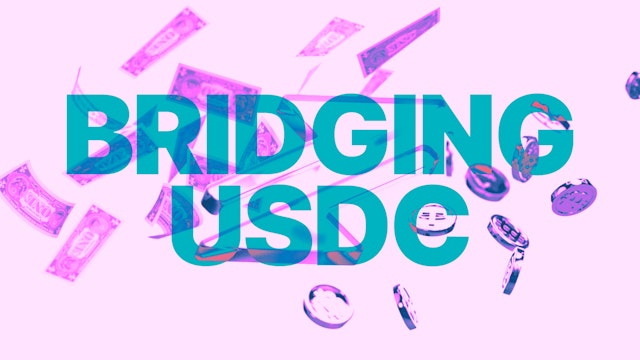What Is a Stablecoin? What are Stablecoins Used For?
What is a stablecoin? They are cryptocurrencies designed to maintain a steady value by pegging to other assets like the US dollar or commodities. Learn about them here.
In this article...
- Stablecoins are designed to maintain a stable value over time
- While stablecoins are not good as a long-term investment, they do have other uses
- Stablecoins are useful in times of high volatility.

Stablecoins have emerged as a crucial component of the digital financial landscape, offering a bridge between the volatile world of cryptocurrencies and the stability of traditional fiat currencies. So what is a stablecoin?
In this article, we delve into the fundamentals of stablecoins, exploring their purpose, mechanisms, and various types.
What are stablecoins? What is a stablecoin?
These are a unique category of cryptocurrencies designed to maintain a stable value over time. Unlike their more volatile counterparts like Bitcoin, these "stable" coins aim to avoid wild price fluctuations.
Stablecoins aim to achieve this by pegging their value to an external reference, which can be:
Fiat Currency: This type of stablecoin may be pegged to well-established fiat currencies like the U.S. dollar or the euro.
Commodities: Some tie their value to the price of precious metals (such as gold) or other commodities.
Financial Instruments: They can also be linked to other financial instruments.
What does “peg” mean?
When we say a stablecoin is “pegged” to something, it means that its value is tied to another thing. Imagine you have a kite, and you tie it to a tree with a strong rope. The kite can’t fly away too far because it’s connected to the tree. Similarly, stablecoins are connected to something else to keep their value steady.
Here are a few ways stablecoins can be pegged.
Currency peg
Imagine a stablecoin is pegged to the U.S. dollar. It’s like having a digital dollar that’s always worth $1.
When the value starts drifting away from $1 (maybe it becomes $1.10 or $0.90), some mechanisms kick in to correct the price.
Commodity peg
Some stablecoins are tied to the price of gold or other commodities.
Algorithmic control
Some use algorithms to maintain stability. For example, if the stablecoin’s value rises, the algorithm might create more coins. If it falls, the algorithm reduces the supply.
These algorithms are like smart robots that constantly balance the stablecoin’s value. However one of the most drama-filled sagas in the cryptocurrency world involved an algorithmic “stable” coin called Terra UST. Read the wild backstory here.
The most popular stablecoins by market capitalisation at the time of writing are Tether (USDT), USD Coin (USDC) and Dai (DAI).
What is USDT and how does its peg work?
In theory, USDT shouldn't go above $1. However, things get interesting when it does.
Let's imagine USDT jumps to $1.05.
On one side, you have buyers who want USDT but are only willing to pay up to $1 because, well, that's its peg.
On the other side, you have sellers who see the price is above $1 and see an opportunity to make a quick profit by selling their USDT.
This creates an imbalance. More people want to sell than buy. This pushes the price back down.
Arbitrageurs see the price difference and jump in, buying USDT for $1 (because that's its peg) and immediately selling it on other platforms for $1.05, pocketing the 5-cent profit.
Tether themselves have some tools too:
Issuing new USDT: If there's more USDT than dollars in their reserves, they can create new USDT and sell them for exactly $1. This increases the supply of USDT, making it less scarce and pushing the price back down.
Buying back USDT: They can use their reserves to buy back USDT at a price above $1. This removes USDT from circulation, making it scarcer and pulling the price down.
However, it's not always perfect. Sometimes, the price might stay above $1 for a while before coming down.
There have been concerns about the transparency of Tether's reserves and whether they truly have enough dollars to back all the USDT in circulation. Do your own research and don’t invest anything you can’t afford to lose.
Also it is worth noting that companies and exchanges can also go directly to Tether to put through larger trades.
How does USD Coin (USDC) work?
USD Coin works in the same way as Tether above. If for example, USDC falls under the $1 mark, the company that oversees it, a stablecoin issuer called Circle, can do some things to maintain the peg.
(Circle is licensed and regulated as a Money Transmitter and to conduct business involving virtual currency by the New York Department of Financial Services.)
Buyers are excited to snag USDC for less than $1. Sellers might think, "Why sell for less than $1 when I can wait for it to go back up?" They hold onto their USDC, making it less available and potentially pushing the price up.
Circle allows people to swap their USDC for actual dollars. This reduces supply, potentially pushing the price up.
Sometimes, even with these tactics, the market might be too strong, and the price might stay below $1 for a while. External factors like negative news or broader market crashes can also affect the price.
What Is Dai?
Dai (DAI) aims to keep its value as close to one United States dollar (USD) as possible. It holds a diverse collection of ERC-20 tokens that users deposit as collateral.
In return, they receive an equivalent amount of DAI.
When the token values rise, additional DAI enters the system, yet users can still redeem their collateral at the initial price.
However, when token values decline, portions of the asset basket are liquidated to maintain stability (the peg), resulting in reduced collateral positions for depositors who receive less than their original investment.
Dai has developed its Collateralised Debt Position (CDP) system since 2014 and remains a big player in the decentralised algorithmic token landscape. The MKR Token, DAI’s governance token, empowers holders to vote on changes to the DAI protocol and is also accessible via CoinJar.
Why are stablecoins important?
The high volatility of cryptocurrencies like Bitcoin poses challenges for everyday transactions. Imagine paying for your morning coffee with a currency that could double or halve in value within hours!
Stablecoins address this issue by providing a reliable medium of exchange. Their stable value ensures that buyers and sellers can transact without the fear of sudden price swings.
Use Cases
Common transactions
They are ideal for everyday purchases, from groceries to online shopping.
Crypto investments
Investors seeking stability can use them as a store of value within the crypto ecosystem.

Internationals and USD exposure
Non-U.S. residents often seek exposure to the U.S. dollar due to its status as a global reserve currency. Holding USD-denominated stablecoins allows them to participate in the U.S. economy, trade, and investment opportunities.
These stablecoins provide a convenient gateway for people outside the U.S. to access the dollar without dealing with complex foreign exchange processes.
For individuals in countries with less stable economies, USD-denominated stablecoins offer a way to preserve purchasing power and protect against hyperinflation.
USD-denominated stablecoins serve as a practical solution for global users who want exposure to the U.S. dollar while navigating the complexities of the crypto landscape.

Types
Fiat-Collateralised
These are backed by a reserve of fiat currency (e.g., U.S. dollars) held in a bank account. Examples include USDC (USD Coin) and Tether (USDT).
Crypto-Collateralised
These use other cryptocurrencies as collateral. For instance, DAI is backed by Ethereum and operates through smart contracts.
Algorithmic Stablecoins
Algorithmic stablecoins rely on complex algorithms to maintain stability. TerraUSD (UST) is an example of an algorithmic stablecoin. However TerraUSD failed wildly so just because there are claims of stability doesn’t necessarily make it so.

Conclusion
Stablecoins play a vital role in creating a more stable and accessible digital economy. Whether you’re a crypto enthusiast or a curious investor, understanding them and their price stability is essential for navigating this evolving landscape.

Frequently asked questions
What is a stablecoin?
A type of digital currency designed to maintain a stable value by being pegged to a reserve asset. This asset might be the U.S. dollar, gold, or other commodities.
What are popular ones?
Some well-known ones include USD Coin (USDC) and Tether (USDT). These digital assets are widely used due to their peg to the U.S. dollar and reliability.
Why are stablecoins important?
They address the high volatility seen in popular cryptocurrencies like Bitcoin. Their stability makes them more suitable for everyday transactions, unlike more volatile crypto assets
How do they achieve stability?
They aim to maintain their value through various methods, such as holding reserve assets as collateral or using algorithmic formulas to control supply.
This stability makes them a valuable asset class. However not all of them have succeeded and not all of them have maintained their peg. This isn't the central bank we are talking about here. So don't invest anything you can't afford to lose.
What is the market cap of stablecoins?
The market has grown significantly, with a total value exceeding $138.32 billion at the time of writing.
What is USD Coin (USDC)?
USDC is pegged 1:1 to the U.S. dollar. It provides stability for digital transactions and is a trusted choice for many users. It is one of the most popular stablecoins at the time of writing.
What are DAI stablecoins?
DAI is a decentralised stablecoin that maintains its value through an intricate system of collateralised debt positions (CDPs). It offers an alternative to centralised stablecoins like USDC.
Are stablecoins considered stable assets?
Yes and no. They play a crucial role in reducing volatility and enabling smoother transactions within the crypto ecosystem.
While stablecoins are considered stable assets, these digital currencies are designed to maintain a stable value by being pegged to a reserve asset, such as the U.S. dollar or other commodities.
Their reliability and low volatility make them suitable for risk-averse investors who prioritise stability over high returns.
However, some stablecoins have lost their peg before, and some have failed completely, like in the case of Terra (UST). Do your own research before making any investment.
What are fiat-collateralised stablecoins?
Fiat collateralisation is when digital assets that derive their value from traditional fiat currencies, such as the U.S. dollar or the euro. Unlike other cryptocurrencies known for their volatility, they maintain a stable value by being pegged to a specific fiat currency.

Suggested Articles

From Wallet to Fiat: How to Cash Out Your USDC
Wondering how to change your gains from crypto into your local currency? Here's how. Read more
How to Bridge USDC on Arbitrum, Solana, and Cosmos
Here's how to bridge USDC across three prominent ecosystems: Arbitrum, Solana, and Cosmos. Read more
What is the Ripple Stablecoin (RLUSD)?
There is a new stablecoin in town, RLUSD. But what makes it different from exisiting stablecoins? Read moreBrowse by topic
Disclaimer: This article is for informational purposes only and does not constitute financial or investment advice. Cryptocurrencies, including Bitcoin, are highly volatile and speculative assets, and there is always a risk that they could become worthless.
Readers should conduct their own research and consult with a qualified financial advisor before making any investment decisions.
CoinJar does not endorse the content of, and cannot guarantee or verify the safety of any third party websites. Visit these websites at your own risk.
Your information is handled in accordance with CoinJar’s Collection Statement.
CoinJar’s digital currency exchange services are operated by CoinJar Australia Pty Ltd ACN 648 570 807, a registered digital currency exchange provider with AUSTRAC.
CoinJar Card is a prepaid Mastercard issued by EML Payment Solutions Limited ABN 30 131 436 532 AFSL 404131 pursuant to license by Mastercard. CoinJar Australia Pty Ltd is an authorised representative of EML Payment Solutions Limited (AR No 1290193). We recommend you consider the Product Disclosure Statement and Target Market Determination before making any decision to acquire the product. Mastercard and the circles design are registered trademarks of Mastercard International Incorporated.
Google Pay is a trademark of Google LLC. Apple Pay is a trademark of Apple Inc.
This site is protected by reCAPTCHA and the Google Privacy Policy and Terms of Service apply.

